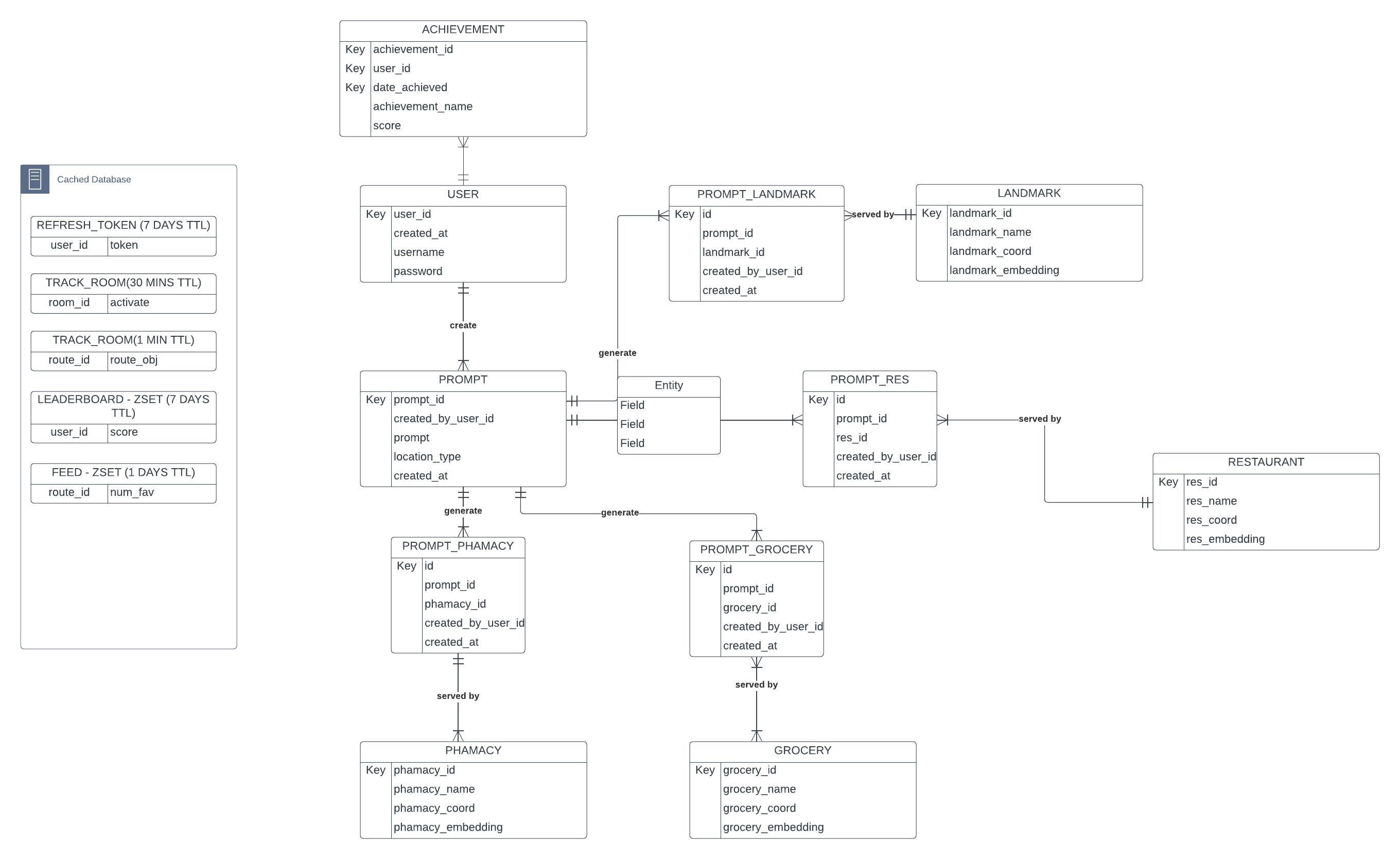Database Introduction
The database system combines the strength of PostgreSQL with Redis's rapid in-memory processing.
The Entity Relationship Diagram (ERD) visually details the interconnectedness of the database tables.

PostgreSQL serves as the primary database, adept at managing vector-based and geo-spatial queries. For consistent deployment, a Dockerised
ankane/pgvectorimage is used alongside thepostgresql-15-postgis-3geo-spatial extension. The system incorporates pgvector for vector operations and PostGIS for spatial data insights. Tables are structured using SQLAlchemy and Alembic, the latter ensuring smooth data migrations.Redis, the secondary in-memory database, focuses on caching and TTL-based data management, speeding up data retrieval and reducing reliance on the primary database. It assists in handling refresh tokens, room PINs, and logs. A layered data-fetching approach prioritizes Redis for speed, falling back on PostgreSQL when necessary.
Together, PostgreSQL and Redis create a reliable and efficient data management backbone, facilitating various functionalities and ensuring smooth operations.